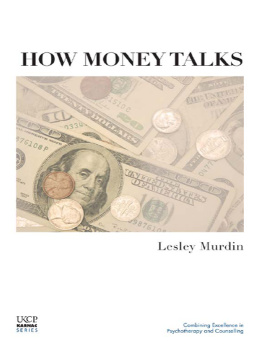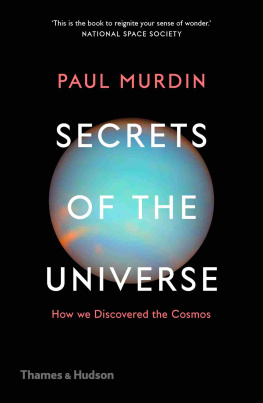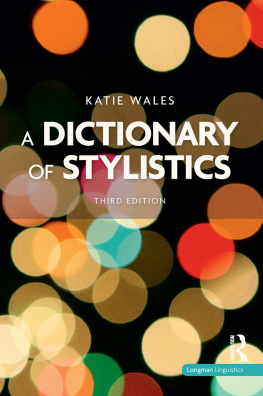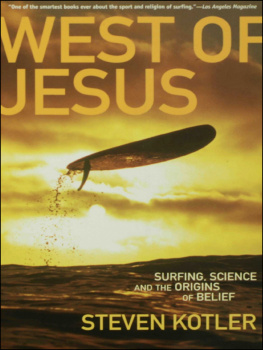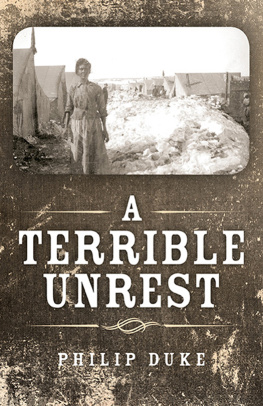The author and publisher are grateful to the following for permission to quote the following material:
Madsen Gubi, P. (2010). A Qualitative Exploration of the Similarities and Differences between Counselling and Spiritual Accompaniment (pp. 8, 45, 54). Unpublished dissertation, Anglia Ruskin University.
First published in 2012 by
Karnac Books Ltd
118 Finchley Road
London NW3 5HT
Copyright 2012 by Lesley Murdin
The right of Lesley Murdin to be identified as the author of this work has been asserted in accordance with 77 and 78 of the Copyright Design and Patents Act 1988.
All rights reserved. No part of this publication may be reproduced, stored in a retrieval system, or transmitted, in any form or by any means, electronic, mechanical, photocopying, recording, or otherwise, without the prior written permission of the publisher.
British Library Cataloguing in Publication Data
A C.I.P. for this book is available from the British Library
ISBN-13: 978-1-78049-067-0
Typeset by V Publishing Solutions Pvt Ltd., Chennai, India
Printed in Great Britain
www.karnacbooks.com
This book is dedicated to my patients and supervisees, who have taught me much of what I know
Table of Contents
ACKNOWLEDGEMENTS
I would like to thank the editors at Karnac Books, especially Heward Wilkinson for his wisdom, scholarship, and willingness to encourage and help me in researching and structuring the book.
My thanks are always due to Meg Errington for all that she contributes to my development as a psychotherapist and in the past to my own psychotherapist and supervisors. I would like to thank my husband Paul Murdin for his generous practical help and encouragement.
My love of English literature is responsible for some of the illustrations and for my background and understanding of people. For this I owe much to my teachers, chiefly Kathleen Donnelly and Dorothy Bednarowska.
The description of the case of Alice is fictional and should not be taken as representing any actual person living or dead. Her story, and the people and organisations in it, are also fictitious. As in all novels and in case studies in books about psychotherapy, the study is based on a variety of my experiences and understanding as the author of the book, but it does not relate to any actual people or events.
ABOUT THE AUTHOR
Lesley Murdin practises as a psychoanalytic psychotherapist. She teaches and supervises in many contexts and has considerable experience in running psychotherapy organisations. She has worked for the registering bodies UKCP and BPC, chairing committees over many years. She was CEO and National Director of WPF Therapy and is now Chair of the psychoanalytic section of the Foundation for Psychotherapy and Counselling. She has published numerous books and papers.
INTRODUCTION
The idea for this book came to me because of the emphasis on money that prevails in the consumer society in which we live, especially since the global financial recession of 2008. As a result of general uncertainty, people from many shades of political opinion focussed thought and emotions on wealth, wealth creation, and how people achieve and retain their personal wealth. An unprecedented level of media and individual attention has focussed on the morality or otherwise of the means of acquiring wealth. In the UK, two groups have received public scorn and anger. Politicians were tried and convicted for claiming undeserved and in some cases illegal levels of payments for expenses. This was ascribed to greed. The second group consisted of bankers, who irresponsibly sold mortgages and other products that could not be sustained by the people concerned from their income. The bankers too have been accused of greed in seeking to maximise their profits without paying attention to the effect on their customers. Both of these groups have caused much pain and distress. The bankers in particular have been accused of causing global financial difficulties. Whether or not this is a fair representation of where the responsibility lies, it has given rise to subsequent arguments about who is responsible for too much borrowing: is it the borrower or the lender? The doubt about this certainly reinforces Polonius dictum that we should be neither a borrower nor a lender (Hamlet, Act I, Scene iii).
Questions about the morality of borrowing and lending take us back to the whole basis of modern consumer societies. What underwrites or underpins the money that we use to buy and sell? We no longer expect national banks to hold gold to the value of the currency circulating, although it is noticeable that in times of trouble people rush to buy gold as it is seen as a safe haven. The whole concept of a safe haven implies that money makes us feel safe and without it we feel helpless and impotent. We must also put it in a safe place so that we can keep it and find it. This led to my interest in the developmental implications of the individuals relationship to money: in what sense does it take over from the primary relationship with the breast or early feeding? There has been thinking about the historical development of money and its meaning and use in each culture but I have not found much attention being paid to the development in each individual of the attitude to money that is apparent in the adult.
The book will therefore attempt to look at these general themes using examples taken from novels and from clinical experience. The main illustration is the case history of Alice which is told in Part I. As is required by the codes of ethics of psychotherapists, this is a fictional case history, but it does draw on actual experience, mine and other peoples. The case of Alice is written in detail, developing her story and the story of her relationship with getting and spending and with what else matters to her. The subsequent chapters then look at the aspects of the symbolism, use and management of money with Alices experience as an illustration.
The clinical importance of money is hard to exaggerate. It is an essential part of the therapeutic process. It has to be discussed at the outset of therapy, and then at periodic intervals subsequently as invoices are given out and money handed over. Some therapists charge a fee in each session, so every individual session will bring up the management of money. For all therapists, payment is a revelation, showing the way in which the patient relates to money as reality and as a symbol.
The patient also reveals his values and the hierarchy in which people are valued at one level and property and goods at another. The patient has an economy in which there is a rate of exchange. One of the purposes of this book is to consider the process of exchange and how it interacts with valuing. Since money is by its nature a symbol and its referent is constantly changing, the therapist can derive a significant and useful amount of information from the patients treatment of money in the consulting room. She can also see how her own pathology interacts with that of her patient to produce the unique quality of each relationship.
In Part II the main areas that are considered are the history and symbolism of money, the management of money and its implications for the individual. Chapter Seven deals with the ways in which we use money to reveal the pain and suffering of which human beings are capable. Money is related closely to control, omnipotence, and the ability to hold on or to let go. For these reasons it plays a part in many mental states that are generally grouped under the heading of obsessional traits. Chapter Eight takes the questions about how these states of mind develop and considers the developmental processes for an individual. Chapter Nine considers the individual in a social context where money operates at all levels to link and separate us. The last chapter of this section, Chapter Ten, considers social questions about the funding of psychological treatment as a question of national and also personal importance.

